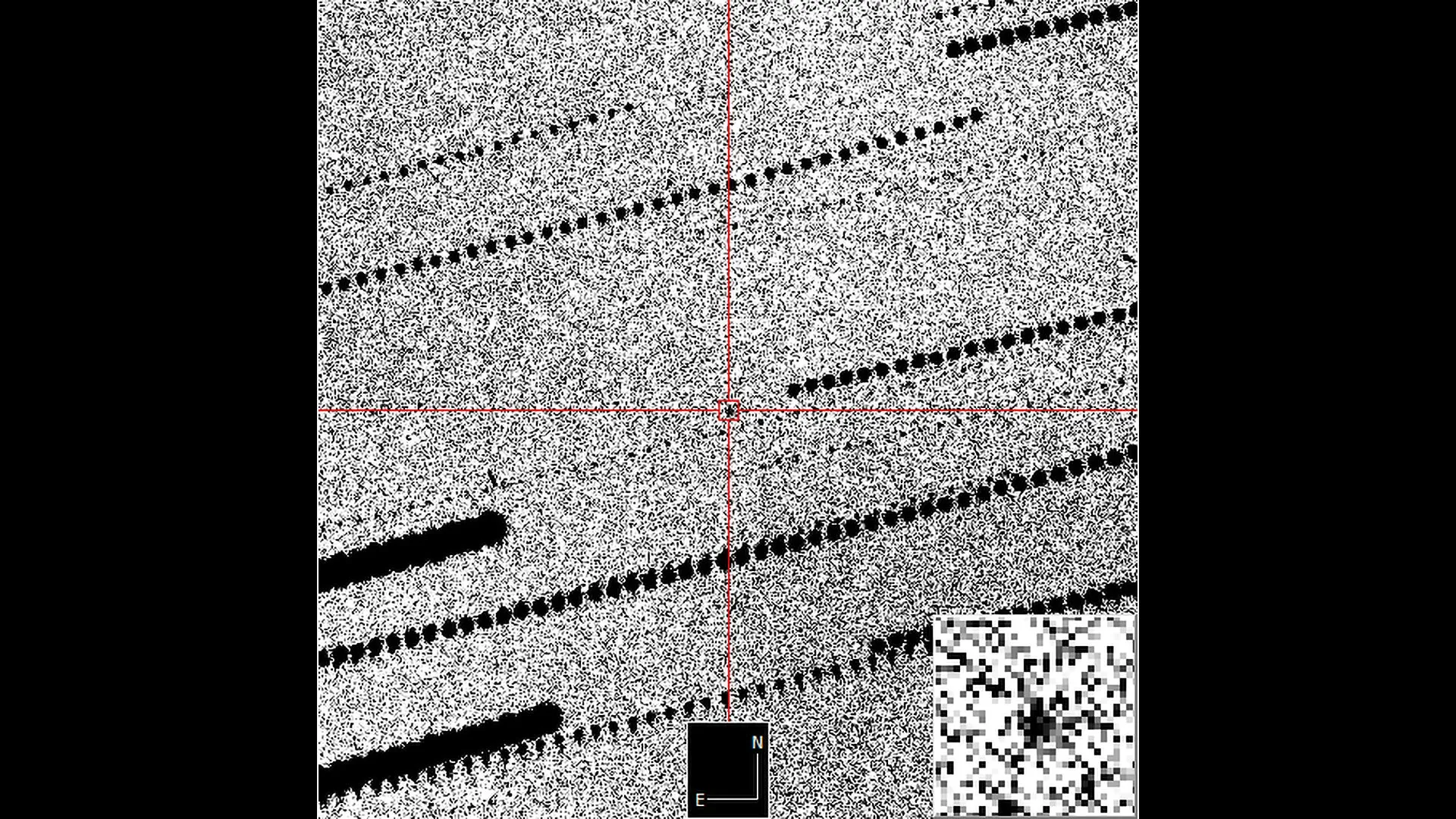Tiny asteroid flew right over Antarctica, and no one saw it coming
- Date:
- October 9, 2025
- Source:
- ESA
- Summary:
- Asteroid 2025 TF zipped past Earth above Antarctica, coming within 428 km of the surface. Roughly the size of a small car, it was detected hours after the flyby and posed no danger. ESA astronomers later confirmed its trajectory with extraordinary accuracy.
- Share:

Asteroid 2025 TF passed over Antarctica at 00:47:26 UTC ± 18 seconds on October 1, coming within 428 ± 7 km of Earth's surface. That distance is nearly the same as the orbit of the International Space Station (approx. 370 -- 460 km).
Measuring about 1 to 3 meters in diameter, the asteroid was detected by the Catalina Sky Survey only a few hours after it had already passed by Earth. Space rocks of this size do not present any real threat. If one enters the atmosphere, it can create a bright fireball and sometimes leave behind small meteorites on the ground.
Soon after its detection, astronomers from ESA's Planetary Defence Office observed the object using the Las Cumbres Observatory telescope at Siding Spring in Australia.
Finding and tracking such a small object in the vastness of space, especially when its position is still uncertain, is a remarkable achievement. These follow-up observations allowed scientists to determine the asteroid's distance and timing of closest approach with outstanding precision.
Understanding the Risk: How Size Shapes the Threat
Asteroid 2025 TF, only a few meters wide, belongs to a class of near-Earth objects that are considered harmless on a planetary scale. Space rocks this small enter Earth's atmosphere several times each year, usually breaking apart high above the surface. When they do reach lower altitudes, the result is typically a spectacular fireball, sometimes followed by tiny meteorites scattered across the ground. Events of this scale rarely cause damage and often help scientists learn more about asteroid composition.
By comparison, objects measuring around 20 meters across -- such as the one that exploded over Chelyabinsk, Russia, in 2013 -- can generate powerful airbursts capable of damaging buildings and injuring people with shockwaves. That explosion released energy equivalent to hundreds of kilotons of TNT, reminding scientists that even modestly sized asteroids can have local effects.
Larger asteroids, those hundreds of meters or more in diameter, pose a much greater risk. While such events are rare, they have the potential to cause regional or even global consequences. For this reason, international efforts like ESA's Planetary Defence Office and NASA's Planetary Defense Coordination Office monitor and catalog these objects to predict potential impacts years or decades in advance.
Global Eyes on the Sky
Worldwide networks of observatories continually scan the heavens for moving objects, from bright comets to faint, fast-moving asteroids like 2025 TF. Surveys such as the Catalina Sky Survey and Pan-STARRS regularly discover new near-Earth objects, while dedicated follow-up telescopes refine their orbits.
These coordinated efforts form the backbone of planetary defense. When astronomers detect an object passing extremely close to Earth, even one just a few meters wide, they can test their detection systems and improve prediction models. Each observation strengthens our ability to identify potential hazards early, giving scientists valuable data for future encounters.
Why Close Passes Matter
Although Asteroid 2025 TF never posed a threat, flybys like this one highlight how dynamic and watchful our solar neighborhood is. Every close encounter serves as both a reminder of Earth's vulnerability and a demonstration of the growing precision of modern astronomy. The successful tracking of such a tiny object so soon after its discovery shows just how far planetary defense efforts have come -- and how prepared the global scientific community is to respond to whatever space sends our way.
Cite This Page: